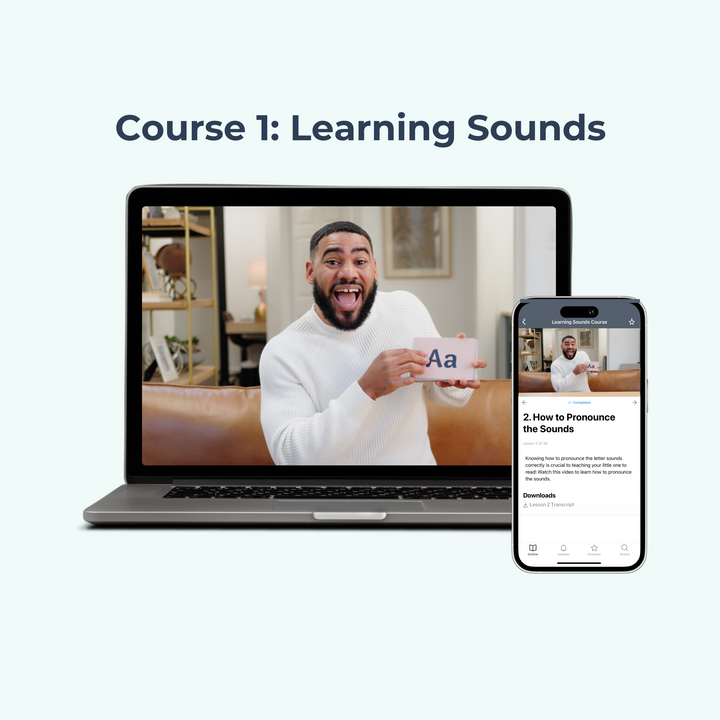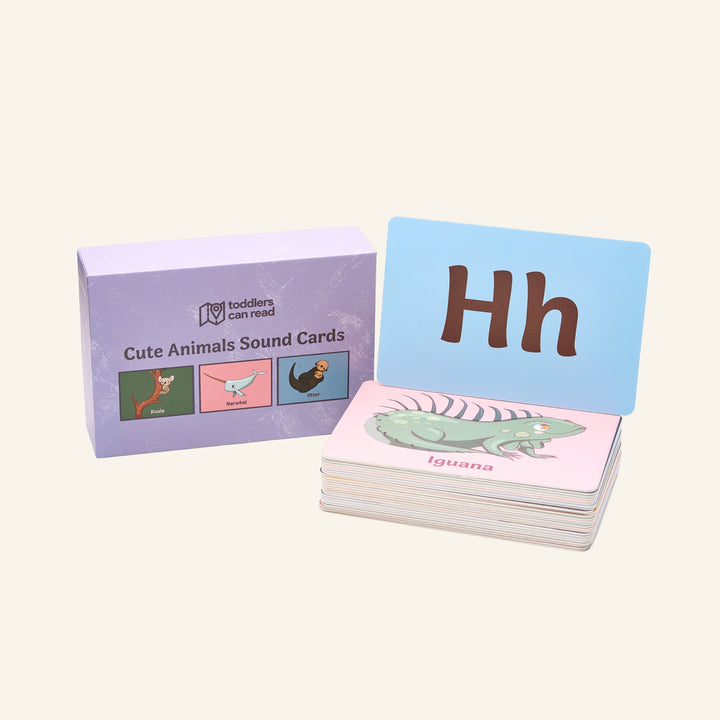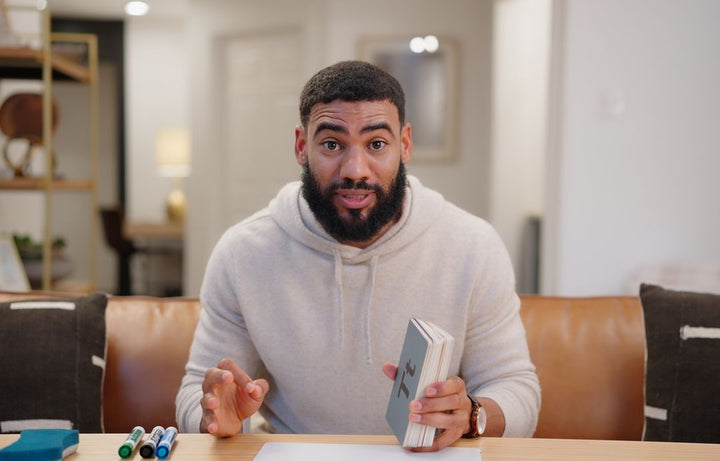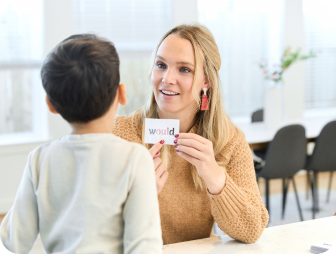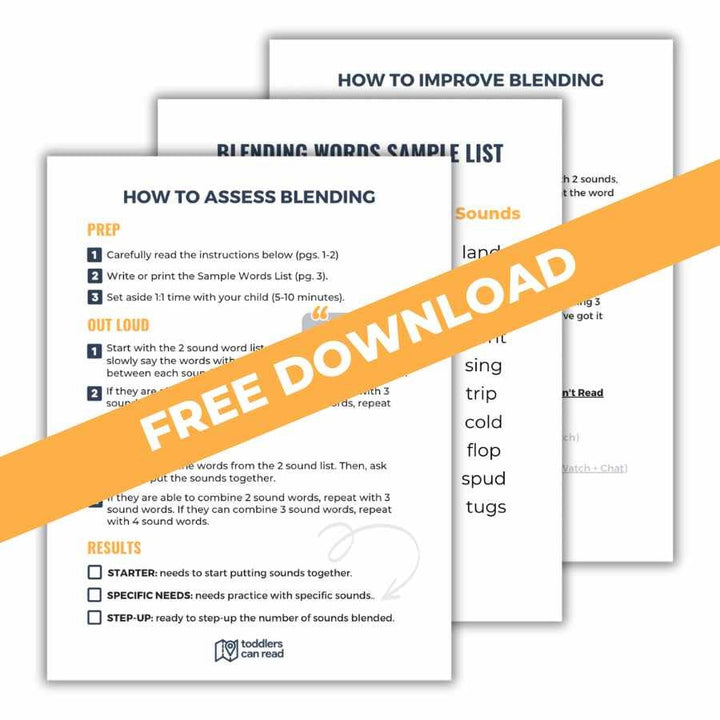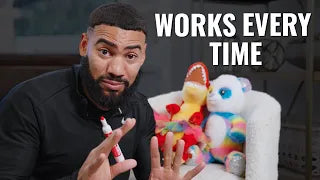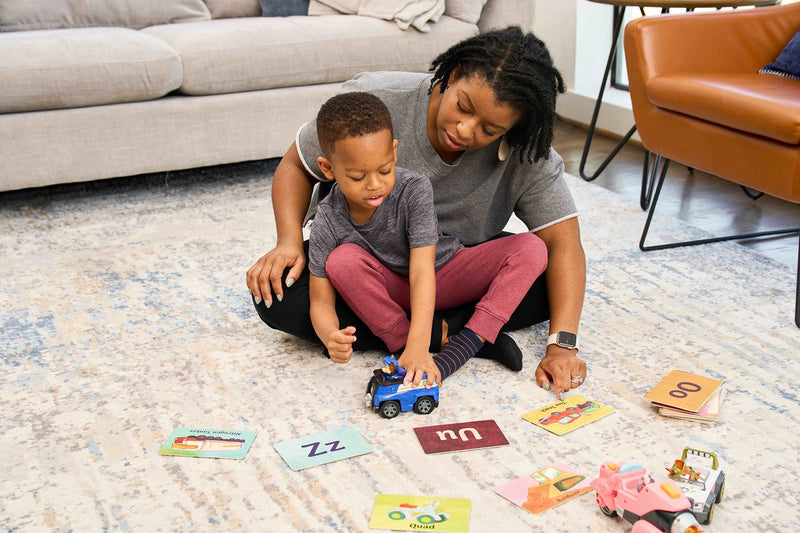Reading is a critical skill that sets the foundation for success in school and beyond.
So if you're feeling a bit intimidated about the whole idea of teaching your little one how to read, that's understandable! But I'm telling you: You can do this.
In this post, you'll learn three practical tips for how to teach your child to read.
#1 Understand how reading works.
The first step toward teaching your child how to read might be to throw out how you were taught.
Unless you had a lot of trouble learning to read, you may not actually remember being taught. But I can assure you: You were taught because reading isn't a natural skill like walking or talking. And the way many of us parents were taught to read involved mostly "sight words"—words to memorize and recall over and over until you reached "reading proficiency."
Beginning with sight words is still a common way to teach early reading skills. But kids who learn to read primarily with sight words tend to do well only until about second or third grade, and at that point, they begin to struggle. Why? Because ultimately they've memorized a shortcut for reading (guessing) instead of learning a strategy for reading.
Phonics: The Better First Step to Learning How to ReadWhen researchers recognized this drop-off in reading proficiency, they began exploring children's developing brains to determine what strategies would more effectively promote teaching and learning reading skills.
What they've found turned reading education on its head: Reading requires our brains to engage a visual system that connects the shapes of letters to their spoken sounds.
Instead of prioritizing sight word lists, it turns out the fastest and most effective way to teach and learn reading skills is to first focus on letter-sound correspondence, which is the basics of phonics.
So, what is phonics? Think of it this way: The English language is like a code that uses symbols (letters) to represent sounds. Phonics teaches readers which letters represent which sounds and how to put those letter sounds together.
Phonics helps us learn to:
- Say the sound each letter represents.
- Read words by blending letter sounds together.
- Spell words by breaking them down into their individual sounds.
Once kids have phonetic understanding, they can move on to the second foundational step: blending.
Kids learn to read easiest when we start with oral blending—the process of hearing sounds and putting them together. To test out and practice your little one's oral blending ability, you could say:
I'm going to say two sounds that make a word. When I say the sounds, you put them together and tell me what word it is! Ready? /A/.../T/. What word is that?
Your child will eventually learn to correctly blend sounds together to create the intended word. Once they can blend two-sound words out loud, try three-, then four-sound words. With just a few minutes of practice every day, you'll be surprised by how quickly your little one improves!
In summary: Starting with memorized sight words is out, and phonics and blending are in.
#2 Make it fun.
Here's something else we've learned about kids and learning to read: We have to make reading personal to them.
Engaging kids with reading lessons means making those lessons fun. If we don't keep kids interested in what we're teaching, they're not going to maintain the focus necessary to practice these important skills.
One way to make learning fun is to incorporate what your little one cares about into what you're trying to teach. Does your kid have a favorite action figure or character? Make the toy say the letter sounds. Are they super active? Put letter flashcards around the room and have them run to the letter that makes the sound on which you're focusing.
Use whatever you can think of to keep things light, fun, and engaging.
Along the way, be sensitive to pacing. A sure-fire way to make sure kids don't have any fun learning to read is to go too fast.
For example, when you're starting out, don't worry about reading full sentences. Don't get caught up in teaching writing or spelling. Instead, focus on just one or two letters and their sounds at a single time. That's it! By concentrating on the basics, you're setting your little one up for success in the future. (Remember, strategies, not shortcuts!)
Teaching your child to read can be a slow process, and that's OK. By focusing on one thing at a time, you can match your kid's pace and not overwhelm them. That also helps keep the fun in the process.
#3 Just... start.
As parents living in a hyper-connected world, many of us do deep dives on all things kid-related. We read books, listen to podcasts, talk with educators, and seek advice on social media.
That's all well and good. But at some point, we have to actually DO something with all of the information we're collecting. And we have to let go of the idea of doing it perfectly.
The truth is, none of us does anything perfectly at first. New basketball players don't watch how-to videos and hit perfect 3-pointers their first time out. Most musicians don't pick up an instrument and play symphony-quality music on their first few tries.
So remember: Just like your child is learning to read, you're also learning to teach. You're probably going to stumble. You're likely going to mess up. It all takes practice. And you'll need to make peace with that, because you'll never get good at supporting your little one if you're too focused on perfection to even start.
Even if your first lesson is 60 seconds or less. Even if you only get one letter-sound combo down in your first week. Everything counts, no matter how imperfect. And by exposing your child to reading skills today, you're building a solid foundation for tomorrow.
How to Teach Reading
Check out my free and on-demand Beginning Reading Workshop to learn the surprisingly simple approach to teaching reading. No teaching experience required!

